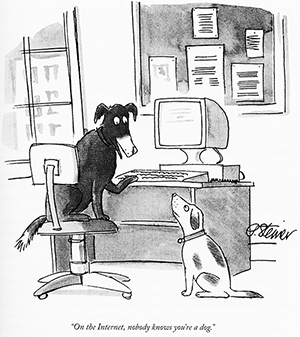content that foments hatred means content that expresses detestation or vilification of an individual or group of individuals on the basis of a prohibited ground of discrimination, within the meaning of the Canadian Human Rights Act, and that, given the context in which it is communicated, is likely to foment detestation or vilification of an individual or group of individuals on the basis of such a prohibited ground. (contenu fomentant la haine)
content that incites violence means content that actively encourages a person to commit — or that actively threatens the commission of — an act of physical violence against a person or an act that causes property damage, and that, given the context in which it is communicated, could cause a person to commit an act that could cause
- (a) serious bodily harm to a person;
- (b) a person’s life to be endangered; or
- (c) serious interference with or serious disruption of an essential service, facility or system. (contenu incitant à la violence)
content that incites violent extremism or terrorism means content that actively encourages a person to commit — or that actively threatens the commission of — for a political, religious or ideological purpose, an act of physical violence against a person or an act that causes property damage, with the intention of intimidating or denouncing the public or any section of the public or of compelling a person, government or domestic or international organization to do or to refrain from doing any act, and that, given the context in which it is communicated, could cause a person to commit an act that could cause
- (a) serious bodily harm to a person;
- (b) a person’s life to be endangered; or
- (c) a serious risk to the health or safety of the public or any section of the public. (contenu incitant à l’extrémisme violent ou au terrorisme)
content that induces a child to harm themselves means content that advocates self-harm, disordered eating or dying by suicide or that counsels a person to commit or engage in any of those acts, and that, given the context in which it is communicated, could cause a child to inflict injury on themselves, to have an eating disorder or to die by suicide. (contenu poussant un enfant à se porter préjudice)
content that sexually victimizes a child or revictimizes a survivor means
- (a) a visual representation that shows a child, or a person depicted as being a child, who is engaged in or depicted as being engaged in explicit sexual activity;
- (b) a visual representation that depicts the sexual organs or anal region of a child, if it is reasonable to suspect that the representation is created or communicated for a sexual purpose;
- (c) written material or an audio recording whose dominant characteristic is the description, presentation or representation of explicit sexual activity with a child, if it is reasonable to suspect that the material or recording is created or communicated for a sexual purpose;
- (d) a visual representation, written material or an audio recording that shows, describes, presents or represents any of the following, if it is reasonable to suspect that the representation, material or recording is created or communicated for a sexual purpose:
- (i) a person touching, in a sexual manner, directly or indirectly, with a part of their body or with an object, any part of the body of a child or a person depicted as being a child,
- (ii) a person who is engaged in or depicted as being engaged in explicit sexual activity in the presence of a child or a person depicted as being a child, or
- (iii) a person exposing their sexual organs or anal region in the presence of a child or a person depicted as being a child;
- (e) a visual representation, written material or an audio recording in which or by means of which sexual activity between a person who is 18 years of age or more and a child is advocated, counselled or planned, other than one in which or by means of which sexual activity between a person who is 16 years of age or more but under 18 years of age and another person who is less than two years older than that person is advocated, counselled or planned;
- (f) a visual representation that shows a child who is being subjected to cruel, inhuman or degrading acts of physical violence;
- (g) any excerpt of a visual representation referred to in paragraph (a), if it is reasonable to suspect that the communication of the excerpt perpetuates harm against a person who as a child appeared in the visual representation; and
- (h) a visual representation, written material or an audio recording that, given the context in which it is communicated, is likely to bring to light a connection between a person and a visual representation, written material or audio recording referred to in any of paragraphs (a) to (d) in which the person appeared as a child, if it is reasonable to suspect that the communication of the representation, material or recording that is likely to bring to light that connection perpetuates harm against the person. (contenu représentant de la victimisation sexuelle d’enfants ou perpétuant la victimisation de survivants)
content used to bully a child means content, or an aggregate of content, that, given the context in which it is communicated, could cause serious harm to a child’s physical or mental health, if it is reasonable to suspect that the content or the aggregate of content is communicated for the purpose of threatening, intimidating or humiliating the child. (contenu visant à intimider un enfant)
harmful content means
- (a) intimate content communicated without consent;
- (b) content that sexually victimizes a child or revictimizes a survivor;
- (c) content that induces a child to harm themselves;
- (d) content used to bully a child;
- (e) content that foments hatred;
- (f) content that incites violence; and
- (g) content that incites violent extremism or terrorism. (contenu préjudiciable)























